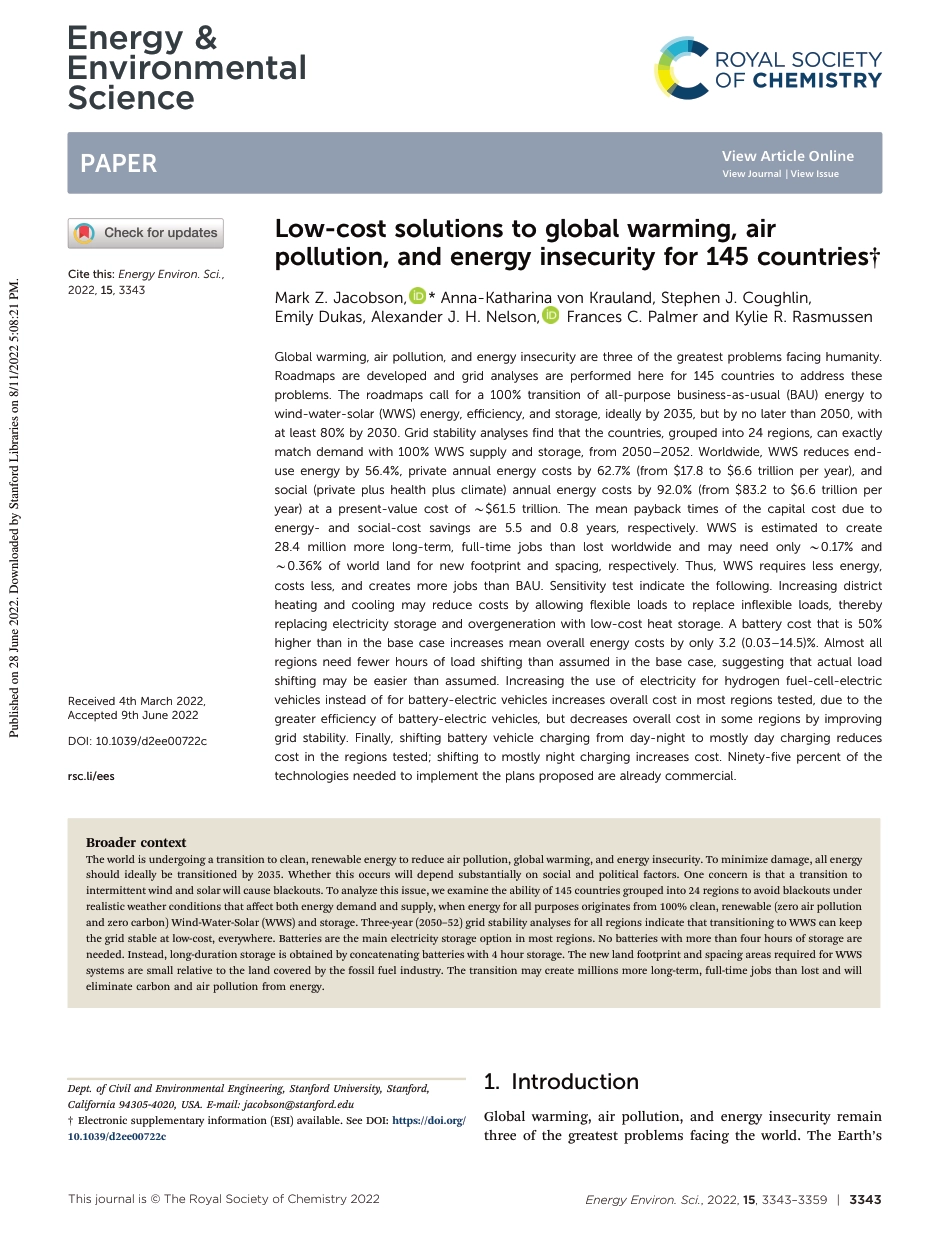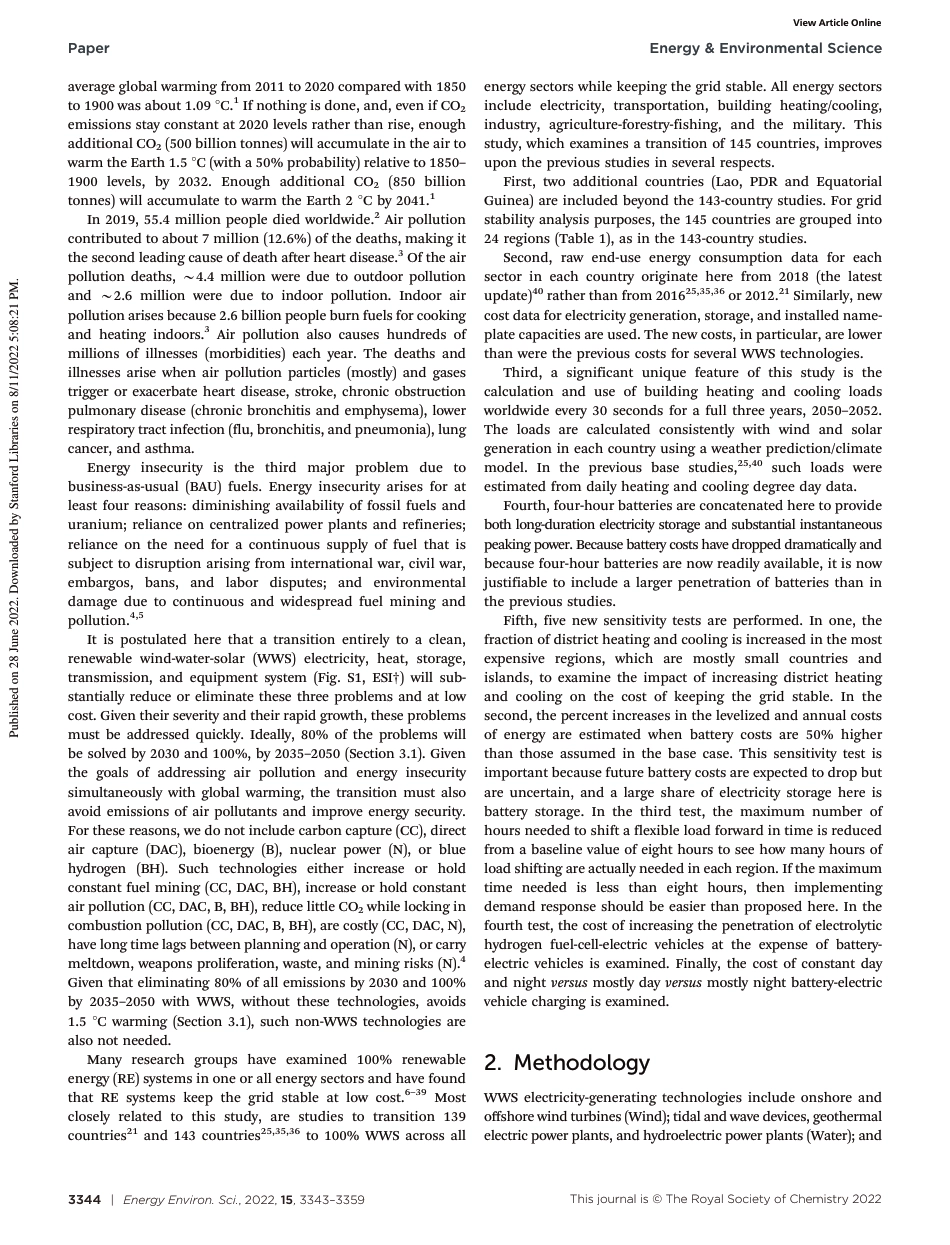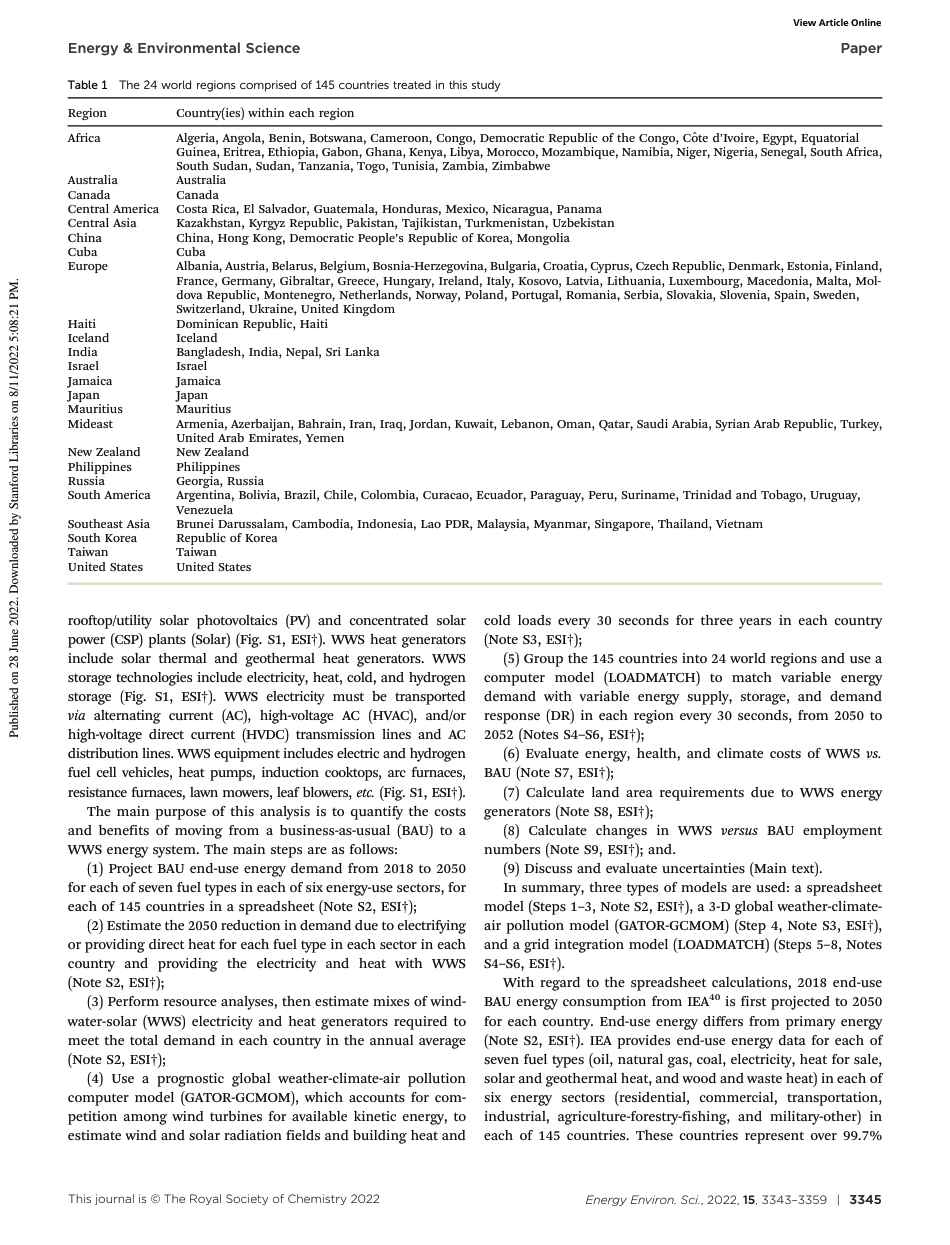This journal is © The Royal Society of Chemistry 2022Energy Environ. Sci., 2022, 15, 3343–3359 | 3343Cite this: Energy Environ. Sci.,2022, 15, 3343Low-cost solutions to global warming, airpollution, and energy insecurity for 145 countries†Mark Z. Jacobson,* Anna-Katharina von Krauland, Stephen J. Coughlin,Emily Dukas, Alexander J. H. Nelson,Frances C. Palmer and Kylie R. RasmussenGlobal warming, air pollution, and energy insecurity are three of the greatest problems facing humanity.Roadmaps are developed and grid analyses are performed here for 145 countries to address theseproblems. The roadmaps call for a 100% transition of all-purpose business-as-usual (BAU) energy towind-water-solar (WWS) energy, efficiency, and storage, ideally by 2035, but by no later than 2050, withat least 80% by 2030. Grid stability analyses find that the countries, grouped into 24 regions, can exactlymatch demand with 100% WWS supply and storage, from 2050–2052. Worldwide, WWS reduces end-use energy by 56.4%, private annual energy costs by 62.7% (from $17.8 to $6.6 trillion per year), andsocial (private plus health plus climate) annual energy costs by 92.0% (from $83.2 to $6.6 trillion peryear) at a present-value cost of B$61.5 trillion. The mean payback times of the capital cost due toenergy- and social-cost savings are 5.5 and 0.8 years, respectively. WWS is estimated to create28.4 million more long-term, full-time jobs than lost worldwide and may need only B0.17% andB0.36% of world land for new footprint and spacing, respectively. Thus, WWS requires less energy,costs less, and creates more jobs than BAU. Sensitivity test indicate the following. Increasing districtheating and cooling may reduce costs by allowing flexible loads to ...



